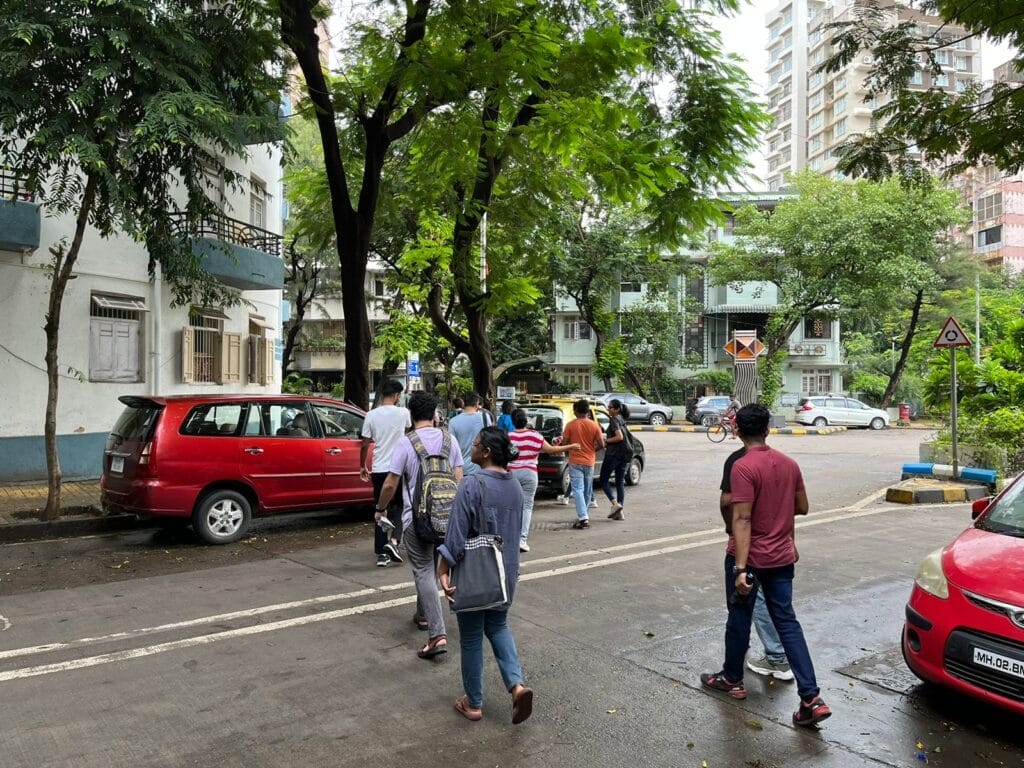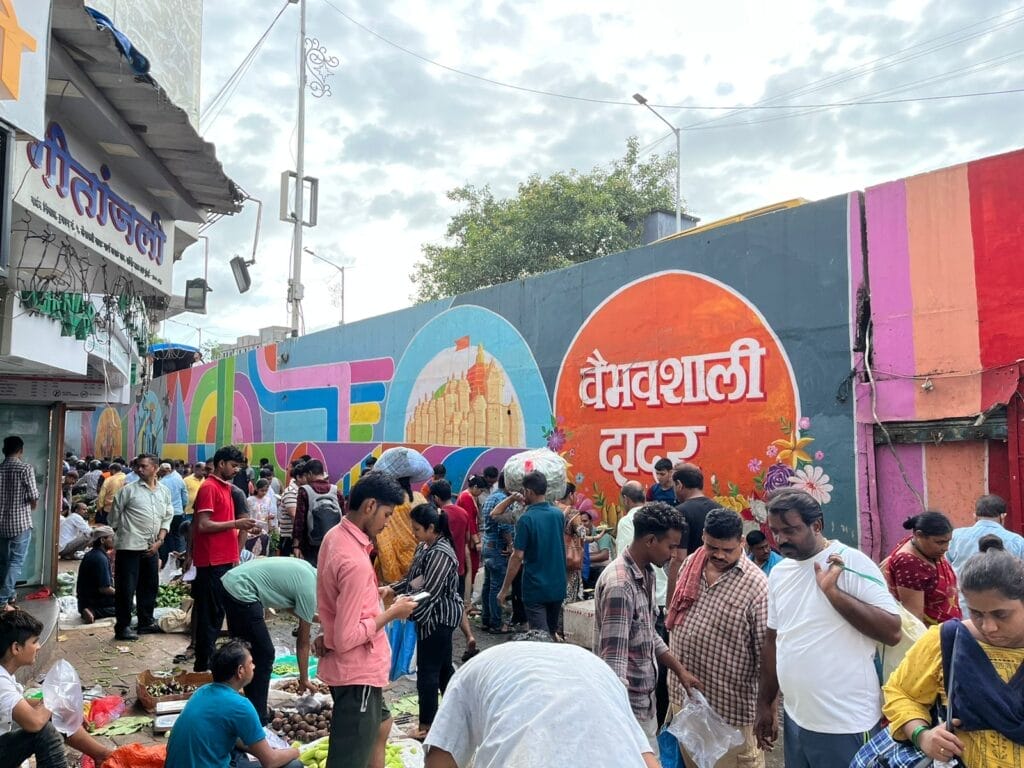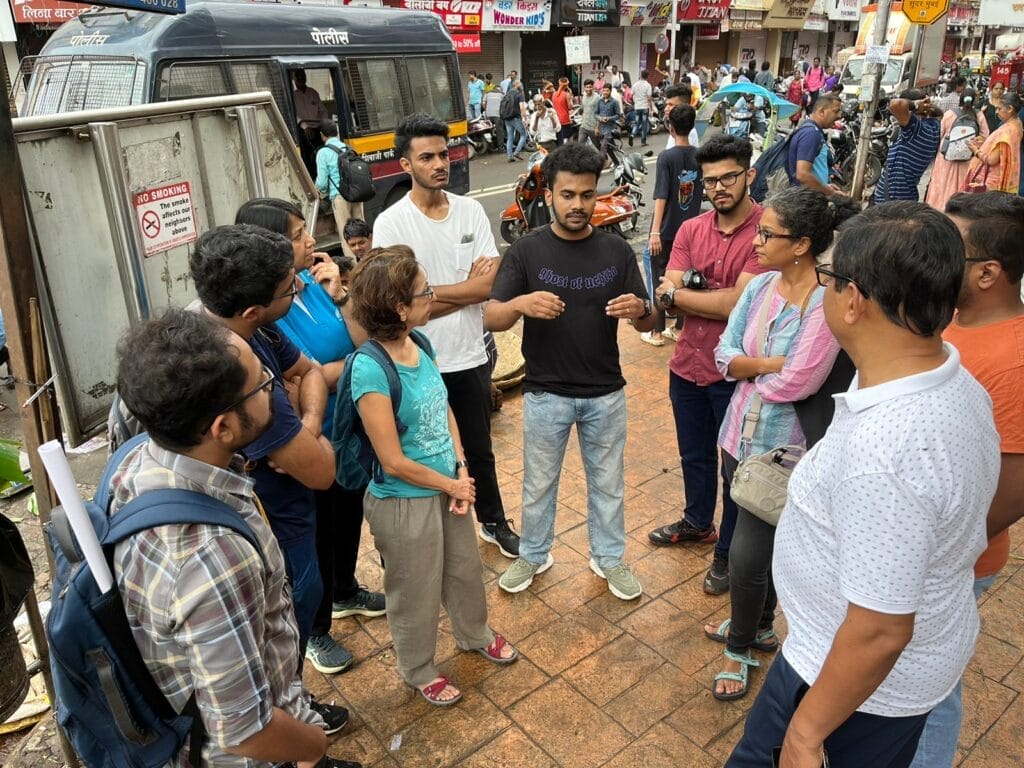When I moved to Mumbai in June 2023 for work, I found myself going for sight seeing to the city’s tourist destinations. Though the city appeared to have consistent and wide footpaths almost everywhere, vehicular right of way seemed to be prioritised over the pedestrian right of way. This struck me as very strange, even as I continued to enjoy walking through lanes of Mumbai very much.
On one hand, there is excellent footpath coverage, utilised by large crowds everywhere. On the other hand, speeding vehicles create obstacles for something as simple as crossing the road.

My opinions about Mumbai’s walkability largely come from comparisons to my home city of Bengaluru. Bengaluru, despite being praised for its pleasant weather and vast green cover, is a city that is notoriously unwalkable, in my experience at least.
In contrast, Mumbai, in many areas, is a great place for walkers. Coupled with its urban density, rail network, cab drivers, who never say no and well maintained footpaths, Mumbai is a haven for pedestrians.
Read more: Walkability: Endless roadblocks force Bandra residents to map their own roads
One of the walks I took was a “community walk” hosted by the Walking Project in Dadar west (where I reside). I signed up for the walk and joined them out of curiosity.
On that first walk, I listened to other individuals, who were not just interested in our urban surroundings, but also willing to change it. It broadened my definitions of walkability, which were mostly shaped by western urbanists and walkability experts.
Structure of the walk
The walks are conducted by Vedant Mhatre and Rishi Aggarwal, co-founders of the Walking Project, an NGO that works towards making cities more walkable. The walk starts at a designated gathering point where the group gathers.
In Dadar west, we started at the railway station at Suvidha Fashion. From there we took a tour around Shivaji Park, went through residential neighbourhoods and ended at Dadar Chowpatty.

Along the way we had various discussions on the walkability of the route. Factors such as footpath width (measured with a measuring laser of course!), crossing lights, air quality, noise levels, crossing countdown timers at junctions and pedestrian obstructions, all were taken into account.
Walking in Dadar west
Dadar is a relatively a walkable area, with good tree coverage and ample greenery. However, pedestrian obstructions were certainly present. One of the key obstacles was the hawking in the area. Given that many hawkers often sell their wares on the footpaths, the footpath gets too crowded.
In addition, zebra crossings were not very visible, or poorly made, which made it difficult for us to cross the roads. Finally, we also noticed how parking on roads obstructs the walkability considerably.
During the walk, Vedant, who guides the walk, spoke about the number of vehicles added in a city per year and how it increases the demand for parking spaces, and thus reduces space for walking.
In addition, between Dadar station and the upcoming Dadar metro station, which is underground, there is a road which is highly unwalkable despite having a footpath on either side. The issue is that it is not wide enough. Once the Metro opens a lot of people will be walking through this road and traffic will increase.
I felt that it was imperative that the footpaths be widened. Either this, or the street could be fully pedestrianised. This would be crucial, given the extent of two wheeler parking on the road and its narrow width.
Interesting discussions through the walk
The walk ends with the group gathering at a public space, usually with seating where discussions are held summarising the observations and exchange of opinions and ideas.

The walk had around 8 or 10 people in attendance. These people were from varied backgrounds. Our group had architecture students, a former officer of the BMC (Brihanmumbai Municipal Corporation), and a another professional. I spoke with almost everyone, mostly about our observations on the walkability and architecture of the neighbourhood. It was an insightful exchange of ideas.
Read more: Traffic jam 24/7: When a Thane service road leads to mall, tech parks and apartments
Rishi, a long-time Mumbai resident, leading sustainability advocate, and one of the guides of the tour, spoke about his liaisons with the city’s municipal corporation. He mentioned the difficulty with working with corporators and ward officers in bringing walkability to the fore in city planning and development.
It was interesting to hear the official side to how walkability is planned and executed by the government and the limits that are present. Another key discussion point among the group was how citizens of the city do not engage with the city too closely. Instead many view the city through the cars they travel in, the malls they visit, or through the windows of their gated homes.

We also discussed the presence of hawkers in the area and whether we could really call them as encroachers. We had two main points of views. The first was the question of why a hawker should be allowed to come on the road and profit from a public space. On the other side, people spoke of how humans have a right to occupy any space, and hawkers are only trying to earn a livelihood, we have to understand their reasons for selling their goods in public spaces. (It is legal for hawkers to sell on the streets.)
Some suggested the solution of a space, provided by the government, for them to sell their goods. However, this solution was contested given the nature of hawking itself, whereby hawking depends on crowds and their demands. Sellers set up their makeshift shops based on how crowds, especially commuters, move through the city.
Broadening my definitions of walkability
I used to always wonder why it felt so hard to walk through the city, and why the city didn’t resemble foreign cities in terms of pedestrian infrastructure. I would go on the internet and read tweets and posts of urbanists, watch YouTube channels of urban experts and influencers. Many mentioned how in some cultures, walkability is prioritised and in others vehicles are prioritised.
A culture that encourages walking is walkability. However, most of these views were based on western urbanists. I did not understand that there was an Indian angle to this, where circumstances of Indian cities, such as hawking, the functioning and role of the Indian government, and the priorities of Indian political systems, play a role in shaping the culture around walkability.
In addition, the way Indian citizens participate in our political system is different, and thus these dimensions require our keen attention to understand India’s culture of walkability or lack thereof.
I wish more people join these walks and understand and support the idea of better walkability in Mumbai.
(You can follow Walking Project at @walkingproject on X (Twitter) or mail them at info@walkingproject.org. To participate and understand various activities follow this page – https://www.walkingproject.org)